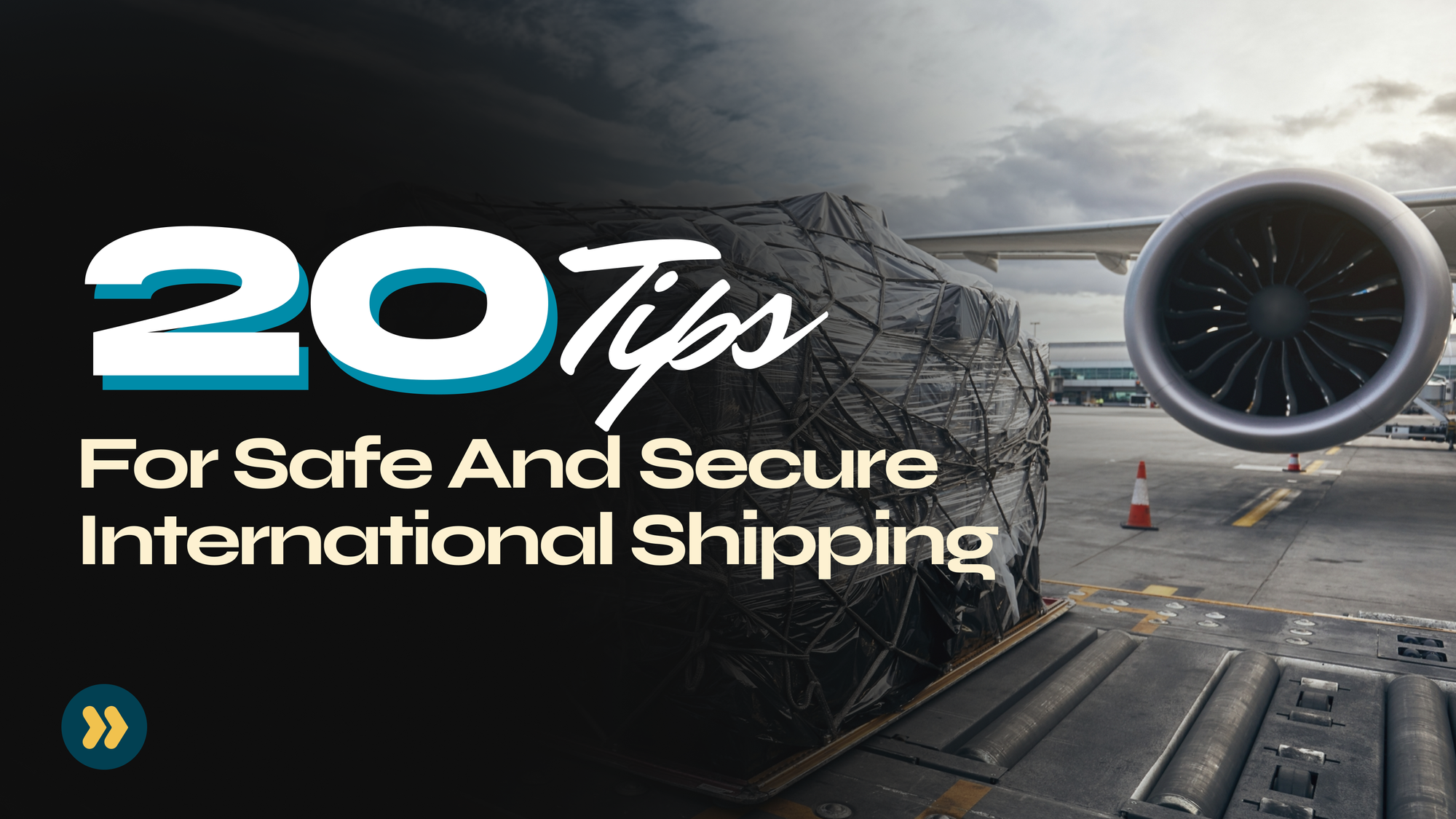20 Tips for Safe and Secure International Shipping

Growing up, my dad always told me stories of his friends who had lost money while doing international trade. According to him, they all start well, but later on it gets tough, and they are almost certain it’s village people.
Now that I am grown, know better than to ascribe the woes of international shipping to village people. International shipping is essential to commerce and trade in today's globalised world. But along with its vast benefits come potential risks, such as damage, loss, theft, and delays.
For businesses and individuals to protect their goods and maintain smooth operations, they must ensure safe and secure shipping. Here are 20 tips that can help you ensure your items are imported or exported safely.
Verify Shipping Regulations and Restrictions:
Learn the import and export regulations of the countries you import and export products to. This includes understanding prohibited or restricted items, customs duties and taxes, and labelling requirements. This will help you avoid issues with customs and ensure you are promoting fair trade practices.
Properly Package Items for International Transport:
As someone who wants to ship goods internationally, protecting your goods from damages and losses is important. Choose sturdy and durable packaging materials that can withstand the rigours of long-distance transportation. Also, use appropriate cushioning like bubble wrap and foam inserts to protect your items.
Document and Label Packages Accurately:
Prepare accurate and complete shipping documentation, including commercial invoices, customs forms, and any required certifications. Clearly label each package with its contents, destination address, and contact information. Properly documenting and labelling your items will help ensure they are properly handled and safely transported to the destination.
Research and Select Reputable Shipping Carriers or Services:
Conduct thorough research to identify reliable and experienced shipping carriers or services specialising in handling your type of goods. Consider cost, transit times, tracking capabilities, and customer reviews.
Ensure Accurate and Complete Shipping Documentation:
Provide accurate and detailed information on all shipping documents, including the value and description of goods, sender and recipient information, and any relevant product codes or classifications. This information will be handy in ensuring that you keep to the laws of the country you are shipping to.
Understand and Manage Import/Export Duties and Taxes:
Calculate and pay applicable import duties and taxes to avoid delays or penalties. Utilise customs brokers or freight forwarders for assistance if needed.
Implement Tracking and Monitoring Systems:
Use tracking services to monitor the real-time location of your shipment and receive notifications of any potential issues. This is where the carrier you chose becomes very important, as you have to get a carrier that can show you the real-time location of your shipment all the time.
Consider Insurance Options for Valuable Shipments:
Protect your valuable shipments with adequate insurance coverage against potential damage, loss, or theft. Compare insurance policies and choose a provider with comprehensive coverage and prompt claims processing.
Use Proper Seals and Locking Mechanisms for Containers:
Your container is an important part of your business operations, and you should secure it with proper seals and locks to prevent unauthorised access and ensure the safety of your goods.
Maintain Clear Communication with the Shipping Carrier:
Like most aspects of business, clear communication is needed in international shipping. Keep the shipping carrier informed of any changes or updates to your shipment details. Also, promptly address any concerns or questions the carrier raises, as they could be crucial to your overall operations.
Provide Accurate and Detailed Shipping Instructions:
Provide the shipping carrier with clear and detailed instructions, including delivery requirements, special handling considerations, and contact information for the recipient.
Share Tracking Information with Relevant Parties:
Share tracking information with the recipient and any relevant parties to allow them to monitor the shipment's progress and prepare for its arrival.
Plan for Unexpected Delays or Disruptions:
Things may not go as planned, so you must plan for unexpected delays. Develop contingency plans to address potential delays or disruptions, such as alternative shipping routes, backup carrier arrangements, and customer communication so they are always kept informed.
Implement Contingency Plans for Lost or Damaged Shipments:
Have clear procedures to handle lost or damaged shipments, including filing claims with the insurance provider and initiating investigations.
Conduct Periodic Risk Assessments and Adjust Strategies Accordingly:
Regularly assess your international shipping risks based on changing regulations, market conditions, and geopolitical factors. Adapt your strategies and risk mitigation plans to fit the evolving international shipping landscape.
Understand and Comply with Regulations for Shipping Hazardous Goods:
Hazardous materials can be detrimental to human health and even the environment, and thus, they need to be properly shipped. Hence, you need to know the international regulations governing the transport of hazardous materials so you can act accordingly.
Properly Label and Package Hazardous Materials:
Clearly label all packages containing hazardous materials with the appropriate UN hazard class labels, hazard identification numbers, and handling instructions. Use sturdy and leak-proof packaging that meets the specifications for hazardous materials transport.
Train Personnel on Safe Handling Procedures:
Train personnel handling hazardous materials on proper packaging, labelling, and transport procedures. Ensure they have the necessary protective equipment and thoroughly understand emergency response procedures.
Review Shipping Processes and Identify Areas for Improvement:
Review your shipping processes to identify areas where efficiency, security, or cost-effectiveness can be improved. Also, gather feedback from the recipient and any relevant parties involved in the shipment. Analyse any issues found during the shipping process and identify potential root causes.
Adjust Strategies Based on Lessons Learned from Previous Shipments:
Incorporate the lessons learned from previous shipments into your shipping strategies. Continuously refine your approach to ensure safe, secure, and efficient international shipping.
Conclusion
Safe and secure international shipping is necessary for businesses and individuals to protect their goods, maintain supply chains, and ensure timely deliveries. Shippers can effectively mitigate risks, enhance security measures, and promote smooth and efficient international shipping practices by following the tips outlined in this blog. It is important to note that this is an ongoing process, not a one-off experience. It requires continuous vigilance, adaptation, and a commitment to best practices.
Subscribe to the Heroshe blog to get helpful tips like this delivered to your inbox.

